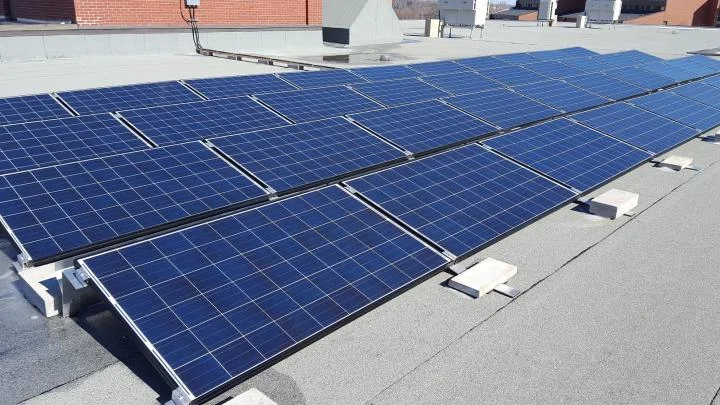Electric vehicles’ charging stations $1 per hour now functioning
Two electric vehicle charging stations in the Bloomfield Centre rear parking lot and one in the J. Bruce Brown Hall parking lot installed on November 20, 2018 are now functioning.
Faculty Management’s Energy & Utilities Supervisor Kevin Latimer, leader of these installments, said the stations are part of the Mulroney Hall project. The charging stations earned Mulroney Hall points to qualify as a Gold building on the LEAD (Leadership Energy and Environmental Design) ranking.
At the cost of $1 per hour, an electric vehicle hooked at a charging station on campus will get its battery charging and the payment is easily processed through the FLO app.
When asked about profitability, Latimer commented “It isn’t profitable at a buck an hour. A buck an hour will recover our energy cost. Three units cost close to $25 000.”
“I was talking to Kevin Latimer about stations since I got the car. Some charging stations are free,” Frank Comeau said referring to the stations at Halifax Library, Dalhousie University and Saint Mary’s University. “I was arguing with Latimer to make them free.”
Comeau added, “There’s no point in charging my car here because it costs me two to three times more than it costs at home. For that reason, I don’t use them that much.”
Comeau was the first user of the charging station at J. Bruce Brown Hall. Comeau and I did the math to compare the charging and fueling costs between our vehicles. Comeau’s Volt travels 60 kilometers for $1.5 to $2.5 while my Grand Prix travels the same distance for $8 to $8.25.
As part of the Maritime Link Project, Nova Scotia is shifting from 28% renewable energy to 40% renewable energy. Latimer notes, “Nova Scotia Power has promised to have 40% renewables by 2020. When that happens, electricity will be more environmentally friendly than gas. Right now, electricity in Nova Scotia is close to breaking even with gas in terms of carbon footprint.”
Latimer started fidgeting with his safety glasses when he mentioned, “We could easily go to 50% renewable energy, but Nova Scotia is going to sell 10% for profit to the States where energy will go at a much higher rate.”
Comeau, electrical engineer and professor at StFX, questioned the research that concludes electric vehicles have a similar carbon footprint as gas vehicles, “Studies have shown that electric vehicles in Nova Scotia emit the same carbon footprint as gas cars and other studies have shown that it’s about half of the carbon footprint. I can’t seem to get to the bottom of this. If we had 100% renewables, it’d be better.”
Comeau has been fascinated with renewable energy since he was a youngster, “I’ve been interested in electric cars since the oil crisis in the 1970s. There were big, long, lineups at gas stations and people started thinking about renewables then is what I remember.”
“I have plans to put solar power on my house to charge my car,” Comeau asserted. Solutions to the carbon footprint issue seem to be generating electricity with renewable energy sources like solar panels, windmills, or hydropower instead of mining lithium.
Comeau is one of two professors at StFX who have electric vehicles. Few students, if any, have electric vehicles. Latimer hopes that tourists visiting campus with electric vehicles this summer will increase the use of charging stations.
Electric vehicles will have to be actively charging at the station on campus or they will get a ticket, and they can stay charging in the station for up to four hours per parking session. Electric vehicle charging symbols will be painted in the designated parking spots this spring.








